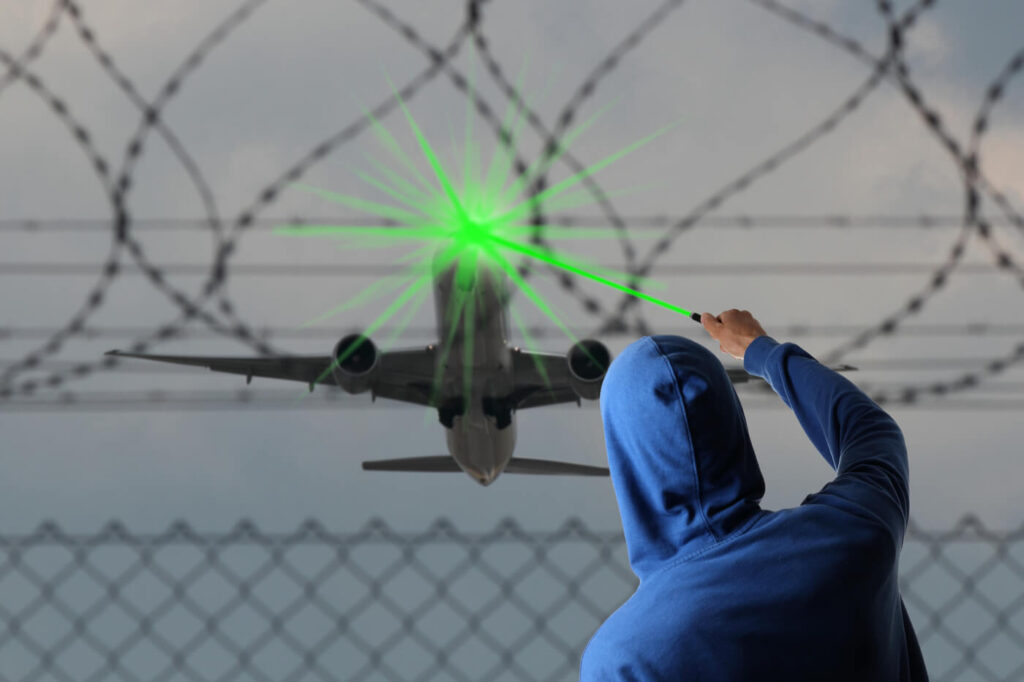A pilot of the Canadian airline Jazz received injuries to his eyes from a laser beam as he was on approach to Ottawa.
The plane, a De Havilland Dash 8-300 registered C-GEWQ, was carrying out domestic flight QK8013 from Montreal Airport (YUL) to Ottawa International Airport (YOW), Canada.
As the flight was 25 kilometers (14 nautical miles) from reaching its destination airport, a green laser beam aimed at the cockpit struck the first officer in the eyes. The captain immediately reported the incident to an air traffic controller and requested medical assistance upon landing.
The aircraft landed normally and the first officer was met with paramedics that took him to a hospital. When struck by a laser, pilots are required to have an ophthalmology evaluation.
An investigation into the incident was opened by the Canadian transport authority. “We take this type of activity very seriously and report any incident to Transport Canada, the local police and airport authorities for investigation,” a Jazz spokesperson said to AeroTime, adding “this is an industry issue and we support the appropriate authorities doing all possible to put a stop to this activity.”
Since June 2018, Transport Canada took security measures to prevent laser strikes from distracting, temporarily blinding or even damaging the eyes of the pilot. “The security measure prohibits the possession of a portable battery-powered laser of more than one milliwatt (mW) in all public places within the municipal limits of the major agglomerations of Montreal, Toronto and Vancouver; and within 10 kilometers of certified airports and helipads, unless these lasers have a legitimate purpose, including work or education,” states the authority.
According to Canada’s Aeronautics Act, offenders charged with “interfering with the performance of the duties of any crew member” risk a maximum fine of 100,000 Canadian dollars ($74,847) and a maximum prison sentence of 5 years.
Another Canadian flight was struck by a laser in May 2019, as it was flying over Florida. WestJet Flight WS1948 from St. John’s International Airport (YYT), Canada to Orlando International Airport (MCO), United States, was also nearing its destination when a green laser light reached the eyes of one of the pilots, damaging them. The culprit was not found.
In 2019, the FAA received 5,487 reports of laser strikes on aircraft, a 93% percent increase since the administration started tracking laser strikes in 2010. In 2014, a man in California, United States, named Sergio Rodriguez was sentenced to 14 years in prison after repeatedly striking the cockpit of a police helicopter with a high-powered green laser pointer. The device was 13 times more powerful than a common laser pointer. Such lasers are legal in the United States as long as they are not advertised as “pointer”.
The capacity of laser strikes to disturb the operation of an aircraft raised the interest of the military. In May 2018, the flight crew of a USAF C-130 Hercules was injured by laser activity at Camp Lemonnier base in Djibouti. The Pentagon issued a notice to its airmen in the region, while the U.S. government filed a diplomatic complaint publicly accusing the Chinese personnel also deployed in Djibouti.
In recent years, China has been developing “blinding laser weapons”, as reported in 2015 by its official military newspaper, the PLA Daily. However, such weapons should not damage the vision of permanently, as defined by the Protocol on Blinding Laser Weapons adopted by the United Nations in 1995, and signed by China in 1998.

